As a pediatric therapist with over 20 years of experience—and a mother of five—I know how important it is to boost fine motor skills in young children, especially those aged 4 to 6. Fine motor skills help children complete daily tasks, from holding a pencil to zipping a jacket, and these abilities are developed best through fun and engaging activities. Simple exercises like manipulating playdough, doing precise painting tasks, or enjoying water and sponge play are perfect for this age group. When children enjoy these activities, they build hand strength and coordination without even realizing they’re working hard!
There are so many ways to boost fine motor skills that don’t feel like “work.” Threading beads or lacing cards can help children focus on accuracy and hand-eye coordination, while activities like sorting coins or using clothespins strengthen their finger muscles. Sidewalk chalk is also a fantastic way for kids to practice drawing and writing in a big, expressive way, allowing for both creativity and skill-building. These activities encourage precision and patience, which are critical elements in developing solid motor skills.
Try making skill-building feel like playtime! Consider setting up races with rice grains or small beans, encouraging kids to pick them up with tweezers or fingers, or exploring more with playdough. Not only do these activities boost fine motor skills, but they also spark creativity and problem-solving. Remember, every child progresses at their own pace, so keep it fun, celebrate minor improvements, and encourage your child as they build their strength and independence through these delightful and skill-boosting activities.
Key Takeaways for Enhancing Fine Motor Skills in Young Children
- Playdough and putty exploration encourages squeezing, stretching, and rolling actions that refine fine motor skills.
- Painting activities using fingers or brushes help improve precision and hand-eye coordination.
- Sponge play activities, such as soaking and squeezing games, strengthen hand muscles and enhance agility.
- Rice races using plastic tweezers help enhance hand-eye coordination and fine motor skills.
- Water play activities, such as transferring water with an eyedropper, boost precision, control, and hand-eye coordination.
Exploring Playdough and Putty
Delving into the world of playdough and putty provides a variety of activities designed to strengthen and refine children’s fine motor skills through actions such as squeezing, stretching, pinching, and rolling. These activities not only foster creativity but also enhance physical dexterity and hand strength.
Playdough, for instance, can be used in a variety of ways that challenge and engage young minds. Children can cut playdough with scissors, an activity that enhances their talent while also improving hand strength. Moreover, playdough can be transformed into sensory-friendly slime, providing a playful and engaging motor skill activity that appeals to children’s sensory curiosity.
Putty, on the other hand, offers different opportunities for children to develop their fine motor skills. Sculpting shapes and figures with fingertips, for example, helps develop hand and finger muscles, contributing to overall talent. Additionally, putty activities such as rolling balls and making snakes can help 4-6 year-olds enhance their fine motor skills. Each of these activities not only provides valuable physical development but also opens a window for creative expression, making learning an enjoyable experience.
Painting for Precision
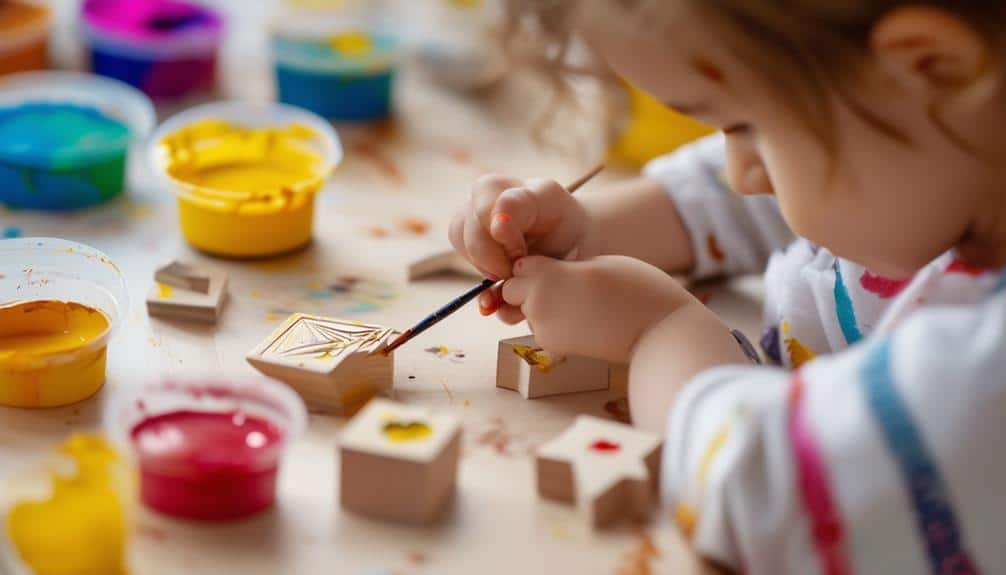
Moving from the tactile exploration of playdough and putty, another enriching activity that fosters fine motor skills in children is painting, specifically emphasizing precision. Engaging in finger painting offers a hands-on artistic experience that enhances fine motor skills. This activity allows young children to interact with the art material directly, promoting hand-eye coordination and manual dexterity.
Brush painting activities are another way to foster these skills. The emphasis here is on brush control, requiring children to hold the brush correctly and make intentional strokes, thereby refining their fine motor skills. Through repeated practice, children learn to control the brush and paint with accuracy.
Paint-by-number kits provide more structured practice for refining fine motor skills. They require accuracy and control and also enhance hand-eye coordination. Upon completion, these kits offer children a sense of accomplishment, encouraging them to pursue more artistic experiences.
Sponge Play Activities
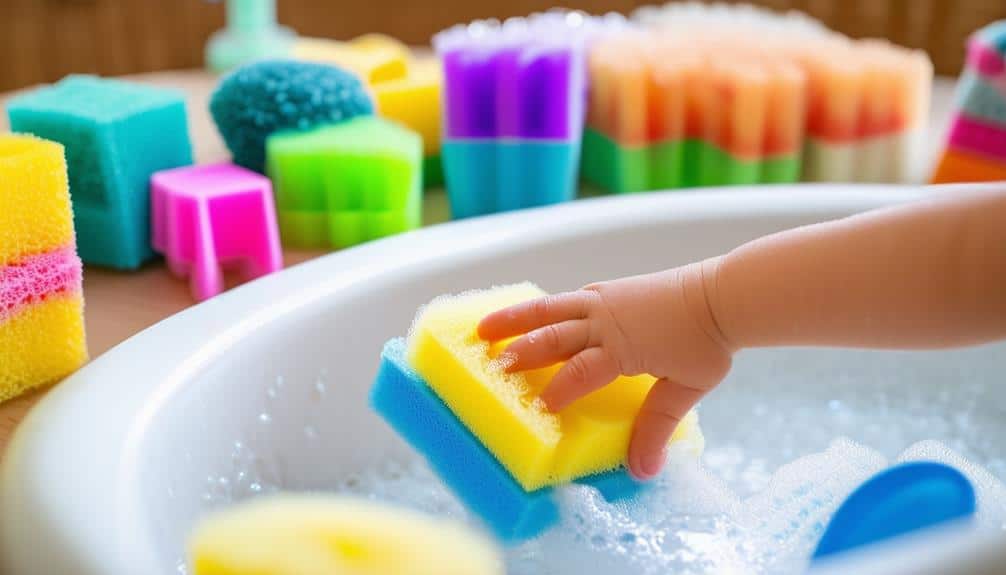
Sponge play activities offer a fun and engaging way to enhance the development of fine motor skills in children aged 4-6. These activities are not only enjoyable but also provide a multisensory experience that helps foster hand strength, coordination, precision, and agility.
Soaking and squeezing games are especially beneficial. These games require children to soak a sponge in water and then squeeze it out, exercising their hand muscles and improving their strength. This activity, while seemingly simple, can significantly enhance their ability to manipulate objects with precision.
Another effective sponge play activity involves a chalkboard and a sponge cube. Children can draw on the chalkboard with chalk and then use the sponge to erase their work. This requires coordination and control, further developing their fine motor skills.
Sponge play activities also promote talent by encouraging the coordinated use of both hands. Tossing and catching a sponge ball, for example, can achieve this. Such activities strengthen not only the hands but also the forearms, making them an excellent choice for parents and educators seeking to enhance fine motor skills in children.
Rice Races for Coordination
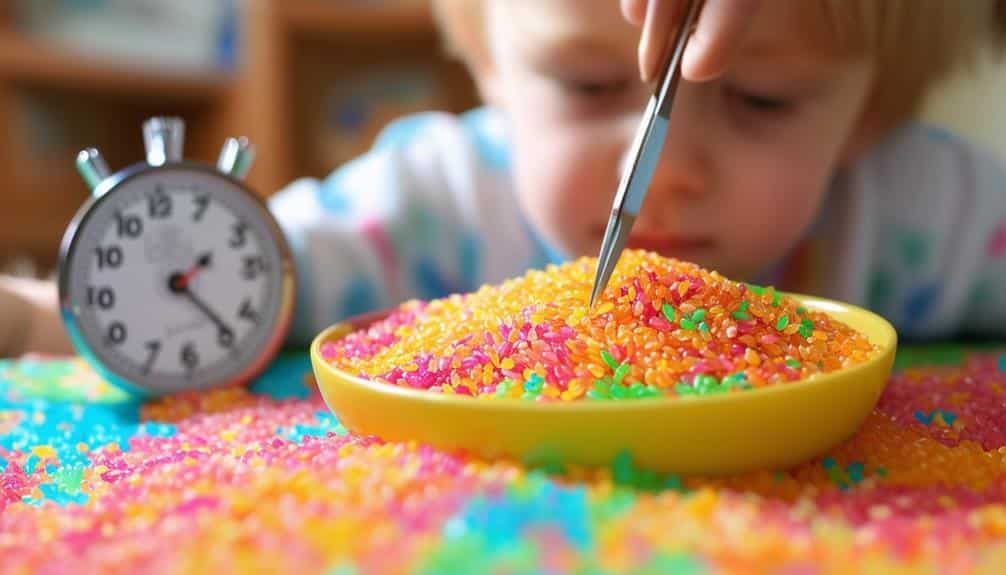
Rice races, an innovative and engaging activity, significantly enhance hand-eye coordination and fine motor skills in children aged 4-6. This activity involves using plastic tweezers to transfer rice grains from one container to another. Not only does this improve hand strength and coordination, but it also hones fine motor skills, talent, and precision.
Children can start with larger objects like O-shaped cereal or pony beads before progressing to rice. This gradual shift from larger to smaller items effectively challenges their skill and precision, which are crucial in developing fine motor skills. Additionally, gripping and releasing the tweezers provides an excellent exercise for hand strength.
Rice races offer a fun, interactive, and educational setting for children to work on these skills at home or in a classroom. Coordination between the eyes and hands is intensely stimulated during this activity, fostering an efficient and coordinated response.
In essence, rice races serve as an essential tool in nurturing the fine motor skills of 4-6-year-olds, promoting their readiness for more complex tasks. By incorporating this activity into their routine, we can ensure their development is on the right track.
Water Play for Precision
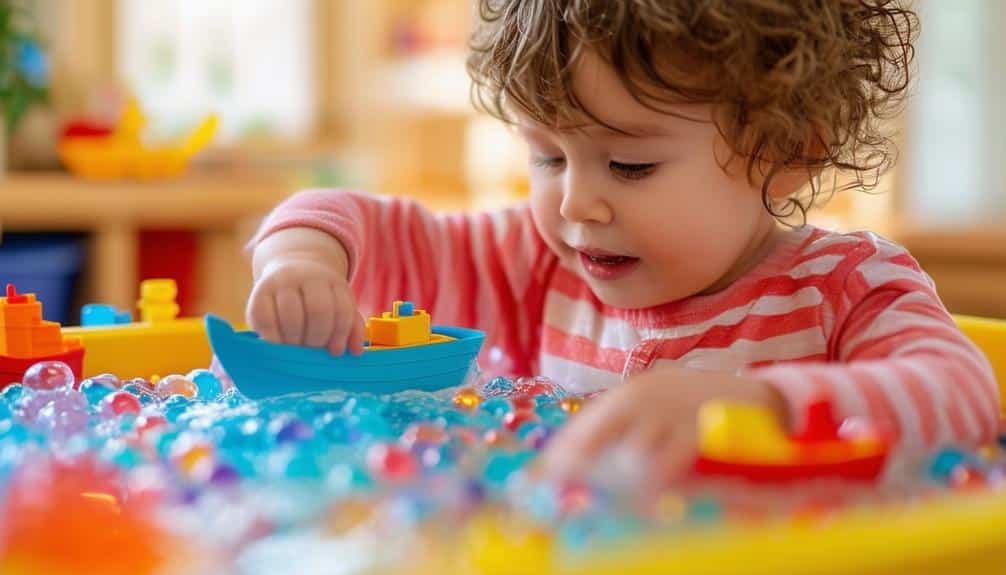
Diving into the world of water play activities, 4-6-year-olds can significantly enhance their fine motor skills, precision, and control by engaging in tasks such as transferring water with an eyedropper or syringe. These tools are not just enjoyable to manipulate, but they also provide the right amount of challenge to promote skill and precision.
Color-mixing experiments using food coloring offer a sensory-rich experience that not only boosts creativity but also reinforces hand-eye coordination. Children can learn about the cause-and-effect relationship while enjoying the visual spectacle of colors merging and changing.
Pouring activities, too, are incredible for developing control. The act of pouring water from one container to another may seem mundane to adults, but for young children, it is an exercise in precision and hand-eye coordination. The goal is not to spill, and in endeavoring to achieve this, children naturally refine their motor skills.
The beauty of water play lies in its simplicity and versatility. It offers an engaging platform for children to explore, learn, and grow while having fun. The skills they develop during these activities—pouring, transferring, and color—mixing—are foundational yet profoundly impactful in their development.
Gardening and Planting Exercises
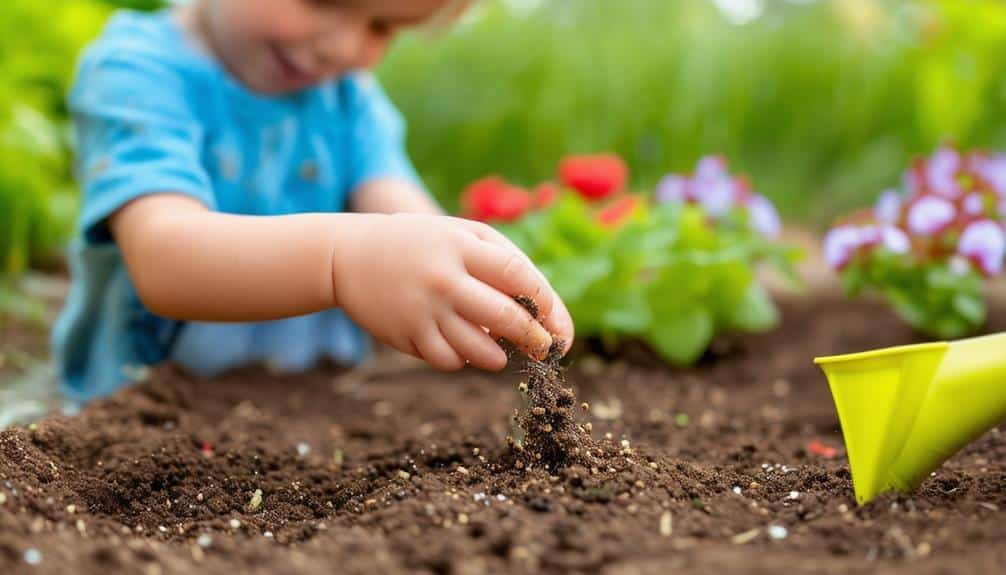
Moving from the fluid world of water play to the earthy domain of gardening, planting exercises are another set of activities that can significantly enhance the fine motor skills of 4-6-year-olds. These outdoor activities provide an interactive and tactile way to develop hand-eye coordination, which is essential for their overall physical development. Children learn to transfer seedlings or pick up seeds, thereby improving their pincer grasp, a critical fine motor skill.
As children manipulate a trowel and explore the process of planting, they enhance their precision and control. This activity encourages the development of small muscle control, especially in the hands and forearms. The continuous movements involved in digging, sowing, and watering are excellent ways to strengthen hands and forearms, providing a solid foundation for more intricate tasks in the future.
Moreover, gardening and planting exercises foster a sense of independence in children. They take responsibility for their plants, nurturing their growth over time. This not only instills a sense of achievement but also sparks their creativity as they envision their garden’s layout and design. Therefore, these activities holistically promote the development of fine motor skills in a fun and engaging manner.
Sticker Activities for Dexterity
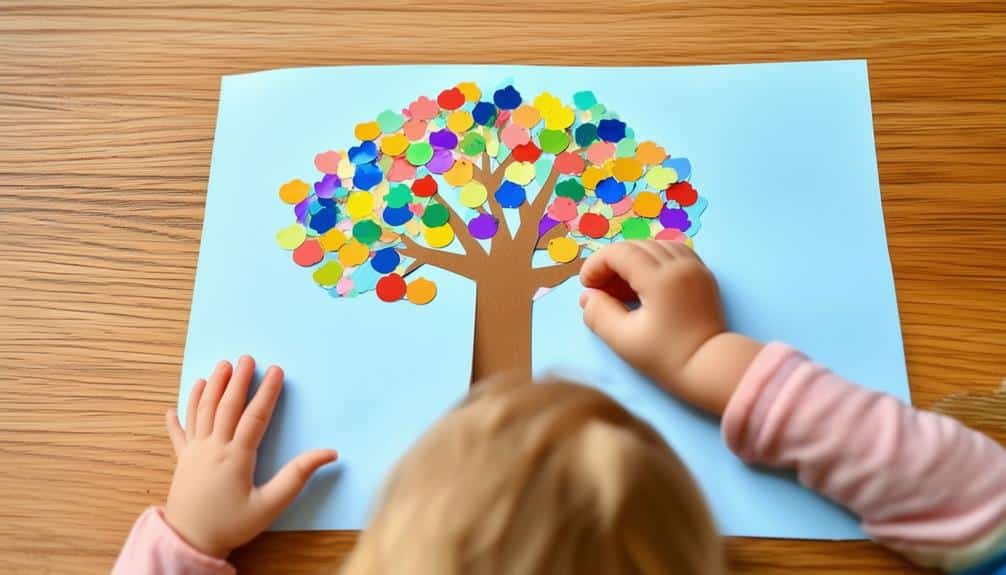
Shifting our focus to indoor activities, sticker-based tasks offer an innovative and playful approach to enhancing the dexterity and fine motor skills of children aged 4-6 years. Challenging yet engaging, these sticker activities promote the development of the pincer grasp, a critical motor skill that involves using the thumb and index finger to hold objects. Moreover, they also foster visual motor coordination, as children must accurately place stickers on specific areas.
Sticker activities can involve placing stickers on a child’s hands or clothing and encouraging them to peel them off or drawing open circles on paper for the child to place stickers in. These tasks are not only fun but also provide tangible tasks that children can accomplish, boosting their confidence and reinforcing their learning.
Below is a table summarizing the benefits and methods of sticker activities:
| Benefits of Sticker Activities | Methods |
|---|---|
| Enhances dexterity | Placing stickers on child’s hands or clothing |
| Improves fine motor skills | Drawing open circles on paper for sticker placement |
| Develops pincer grasp | Peeling off stickers |
| Boosts visual motor coordination | Accurate sticker placement |
| Engaging and fun | Modify activities based on the child’s skill level and preference |
Stringing Activities for Coordination
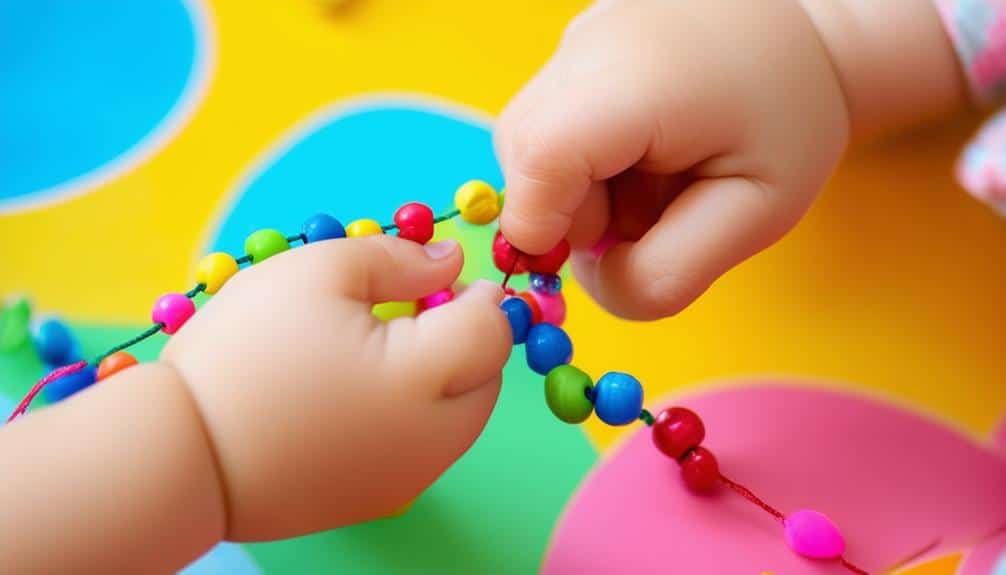
Continuing our exploration of indoor pastimes, stringing assignments offer a practical and engaging method for enhancing hand-eye coordination and fine motor skills in children. These activities, which involve threading beads or other objects onto a string, not only captivate children’s attention but also contribute significantly to their developmental growth.
One key benefit of stringing activities is the promotion of bilateral coordination. This requires children to use both hands in a coordinated manner, a skill that is fundamental for everyday tasks. Moreover, finger dexterity and precision are enhanced as children need to carefully manipulate small objects onto the string, improving their ability to handle delicate items with care and accuracy.
Furthermore, these tasks demand a high level of concentration, nurturing the child’s ability to focus, which is essential for academic learning. Threading objects in a specific order also enhances problem-solving skills as children decipher the best way to accomplish the task.
Paper Activities for Muscle Strength
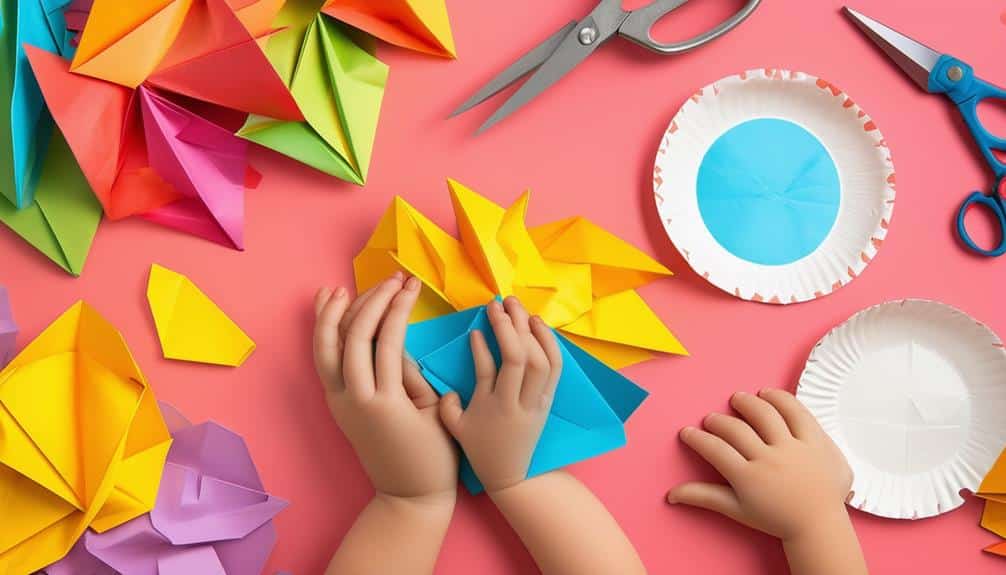
Diving deeper into the domain of motor skills development, paper activities present a valuable tool for enhancing muscle strength in 4-6-year-olds, specifically in their hands and fingers. These activities are not only fun and engaging but also contribute significantly to the development of fine motor skills.
Ripping or crumpling paper, for instance, invites children to utilize their hand muscles distinctly. This simple action can promote the bimanual tripod grasp, which is essential for holding and maneuvering objects with precision. Further, engaging in mosaic crafts with ripped paper pieces can offer a dual benefit. Not only does this activity stimulate creativity, but it also enhances hand and finger strength through the repetitive motion of picking and placing small pieces.
Moreover, tearing paper provides opportunities for developing the pincer grasp – an essential skill for many daily tasks. Lastly, they introduce paper folding exercises into their play routine. These exercises not only improve hand dexterity but also coordination, preparing them for more intricate activities as they grow older. Remember, these paper activities should be fun, fostering a positive and encouraging environment as children explore and develop their fine motor skills.
Coin Activities for Grasp Improvement

Building on the theme of fine motor skills development, coin activities offer an interactive and tactile method for enhancing grasp functions in children aged 4-6. These activities, which may include tasks such as placing coins in a piggy bank or sorting and stacking coins, are designed to improve the child’s visual motor coordination and hand and finger strength.
Coin activities can notably enhance hand and finger control. By manipulating coins, children learn to control their fine motor movements with precision, which in turn aids in the development of their manipulation skills. This can be achieved through careful stacking of coins in various ways, which can be adjusted in difficulty to match the child’s skill level.
Furthermore, the tactile nature of coins allows for a tangible experience that can make the learning process more engaging for children. The challenge of manipulating coins can also promote the development of talent, an essential skill in performing complex tasks. Through coin activities, children can gain a fun, hands-on way to improve their grasp and boost their fine motor skills. The benefits of these activities extend beyond motor skills, fostering patience, focus, and a sense of achievement.
Clothespin Activities for Precision
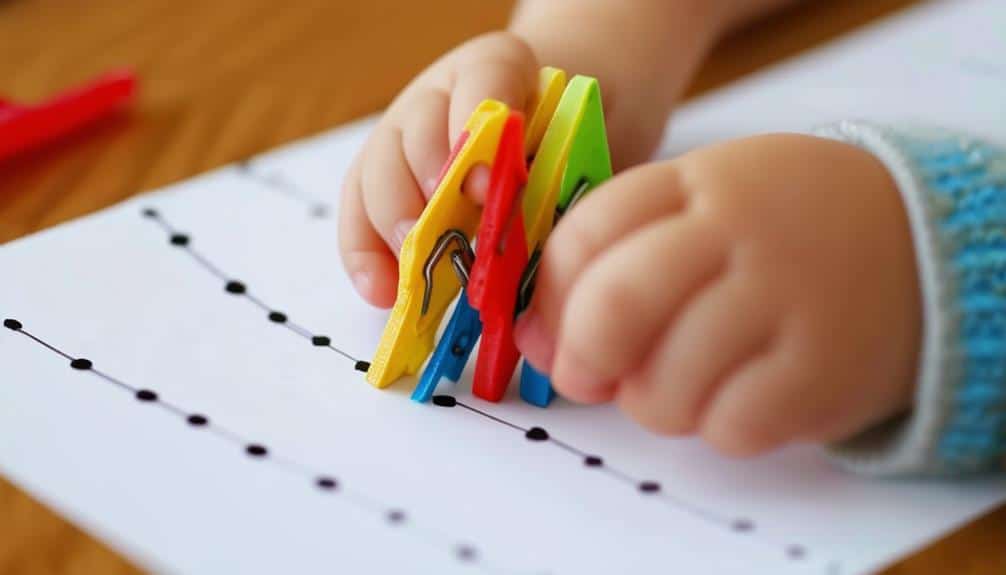
Shifting the focus to clothespin activities, these engaging and tactile exercises serve as an excellent tool for enhancing precision and hand strength in children aged 4-6. The mundane act of opening and closing clothespins is transformed into a nurturing exercise that develops fine motor skills and promotes finger dexterity.
Precision tasks such as clipping clothespins onto objects or hanging artwork with clothespins can be surprisingly effective. These tasks not only bolster hand-eye coordination but also encourage the development of precise movements. Gripping the clothespin, aligning it correctly, and releasing it at the right moment all contribute to a child’s manual precision.
Clothespin activities provide engaging ways to stimulate and strengthen little fingers. They offer a fun, hands-on approach to developing fine motor skills. Whether it’s creating a clothespin chain, a clothespin craft, or simply clipping and unclipping from an edge, these tasks can significantly enhance hand strength and control.
Sidewalk Chalk Activities
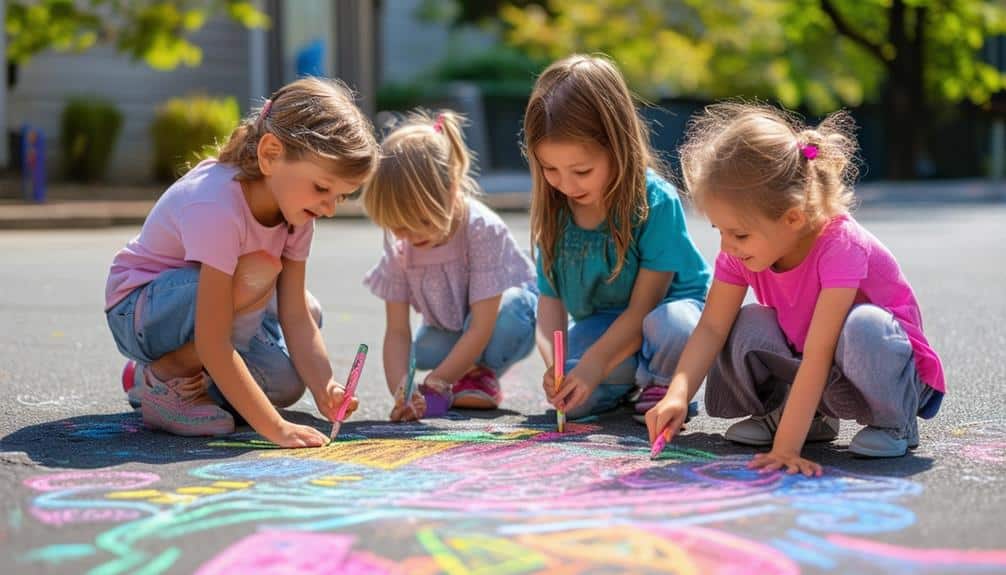
Moving from indoor tasks to outdoor ones, sidewalk chalk activities present an exciting and creative method for enhancing fine motor skills in children aged 4-6. Drawing with sidewalk chalk offers a fun and immersive way for children to develop hand and finger strength. As they draw, trace, and color on outdoor surfaces, they are not only engaging their creativity but also working on their fine motor development.
Sidewalk chalk activities are not just about fun; they serve a critical role in promoting hand-eye coordination. As children focus on tracing lines, shapes, and patterns on the ground, they are challenged to make precise movements, thereby improving their motor skills. This kind of activity demands the child’s full attention and also offers them an opportunity to control the pressure they apply while drawing, fostering a sense of control and precision.
Moreover, sidewalk chalk activities foster artistic expression in children. They can experiment with different colors, shapes, and designs, allowing their imagination to run free. This not only boosts their creativity but also contributes to their fine motor development in an enjoyable and rewarding way.
Threading and Lacing Activities
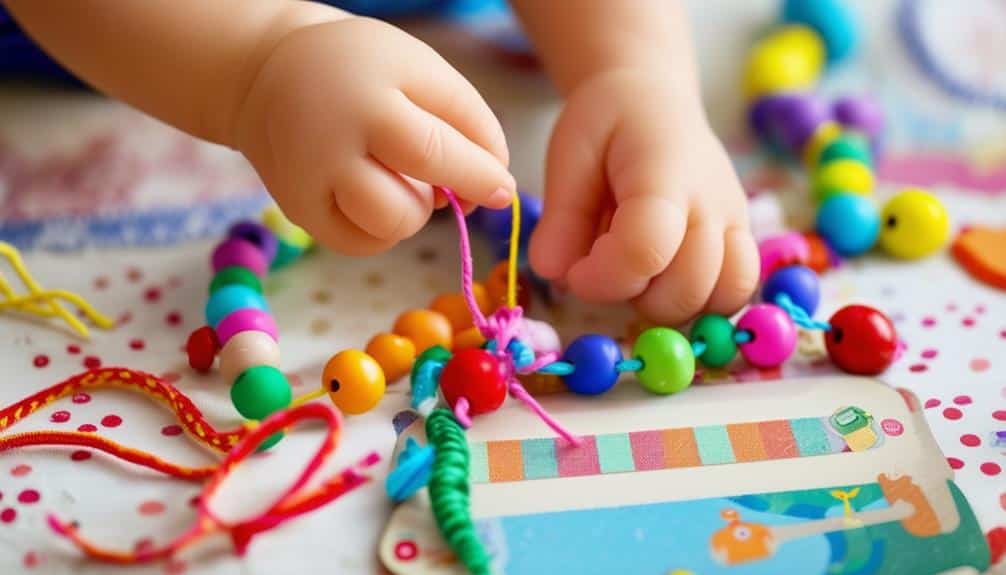
Have you ever considered the potential benefits of threading and lacing activities for children aged 4-6? These simple yet engaging tasks can significantly enhance a child’s hand-eye coordination and fine motor skills, providing foundation skills for writing, drawing, and other manual tasks.
Threading and lacing activities are not just fun but also enriching. For instance, threading beads or Cheerios onto strings can do wonders for a child’s muscle memory and bilateral integration. Bilateral integration, the ability to use both hands together skillfully, is fundamental in performing daily tasks. By starting with larger beads and gradually progressing to smaller ones, children can be gently challenged, thereby honing their fine motor skills.
In addition to threading, lacing activities using yarn or shoelaces can promote finger dexterity and hand strength. The precise movements required in these activities help children develop control in their hand movements, contributing once more to their fine motor skill development.
Putty Activities for Hand Strength
In the same manner as threading and lacing, putty activities also provide an engaging platform for the development of fine motor skills in children aged 4-6, with a specific focus on enhancing hand strength. Putty activities offer a hands-on experience, with the malleable nature of putty promoting a variety of actions like squeezing, stretching, and rolling, all of which are pivotal in developing hand strength and finger dexterity.
Engaging in putty activities helps 4-6-year-olds explore their creativity while simultaneously refining their fine motor skills. By sculpting shapes and figures with putty, children stimulate their imagination and enhance hand and finger muscles, which is essential for tasks that require precision.
The versatility of putty activities allows for extra challenges. Children can roll the putty into balls or elongate it into ‘snakes,’ offering different forms of exercise for their hands and fingers. Moreover, hiding small objects in the putty introduces an element of surprise and added complexity. Therefore, putty activities are an enjoyable and effective way to promote hand strength and precision, contributing significantly to the motor skill development of 4-6-year-olds.
Frequently Asked Questions
What Fine Motor Activities Are Good Practice for Children Ages Four to Six?
Practical activities for enhancing fine motor skills in 4-6-year-olds include creating with playdough, scissor practice, developing a pincer grasp, button sewing, threading beads, drawing circles, Lego building, and finger painting.
What Is the Best Way to Develop Fine Motor Skills of a 4-Year-Old?
Engage 4-year-olds in playdough sculpting, bead threading, paper folding, and scissor cutting to enhance their fine motor skills. Activities like button sewing, Lego building, and coloring pages also foster pincer grasp development.
What are some simple ways to boost fine motor skills for kindergarteners learning to tie shoes?
Start with fun threading and lacing activities to boost fine motor skills needed for shoe-tying. These tasks build finger dexterity and hand-eye coordination, helping them gain confidence in tying their shoes.
What Are Essential Areas Where First Graders Use Fine Motor Skills?
In first grade, children use fine motor skills for critical tasks like writing, cutting with scissors, and organizing small objects. Developing these skills helps them succeed with schoolwork and everyday tasks, fostering confidence and independence.
What Activities Help Improve Fine Motor Skills?
To enhance fine motor skills, incorporate activities such as playdough sculpting, button sorting, bead threading, and cutting practice. Furthermore, painting activities, pincer grasp games, sticker peeling, and tracing shapes can significantly improve agility and coordination.
What Is a Fine Motor Skill for a 6-Year-Old?
Fine motor skills for 6-year-olds involve precise hand-eye coordination and finger dexterity, such as the pincer grasp. These skills enable activities like drawing shapes, writing, scissor cutting, and buttoning clothes independently.
Conclusion
To sum up, fine motor skills are crucial for a child’s development, influencing their capacity to carry out daily tasks and academic work. Children aged 4 to 6 can significantly improve these skills by participating in enjoyable and stimulating activities like playdough exploration, detailed painting, sponge play, and threading exercises. These activities not only support motor skill growth but also cultivate creativity, patience, concentration, and hand-eye coordination, laying a solid groundwork for future learning and development.

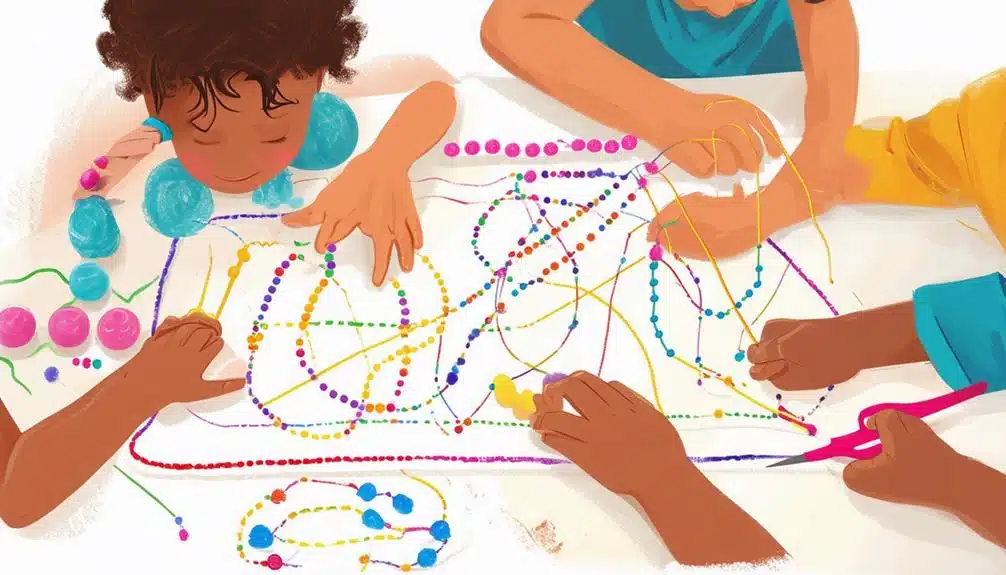
Recent Comments